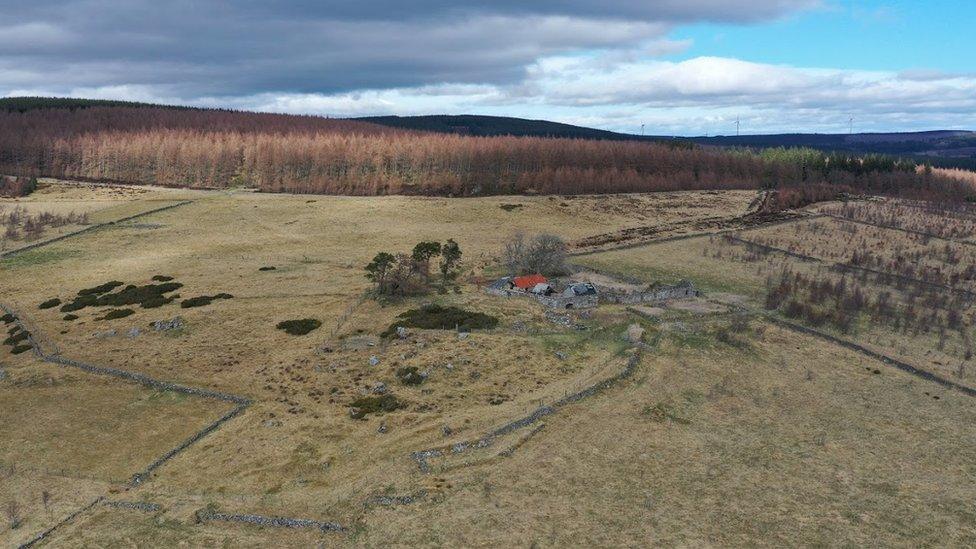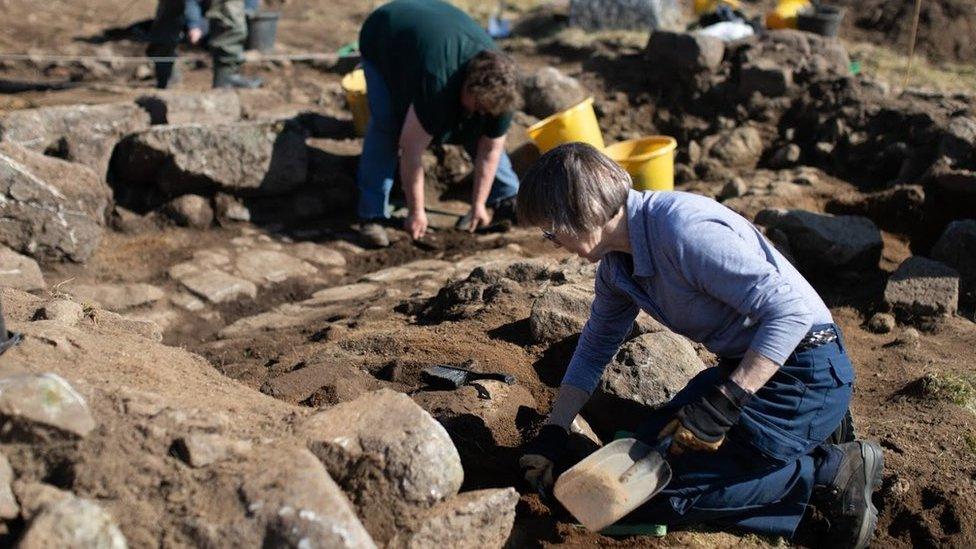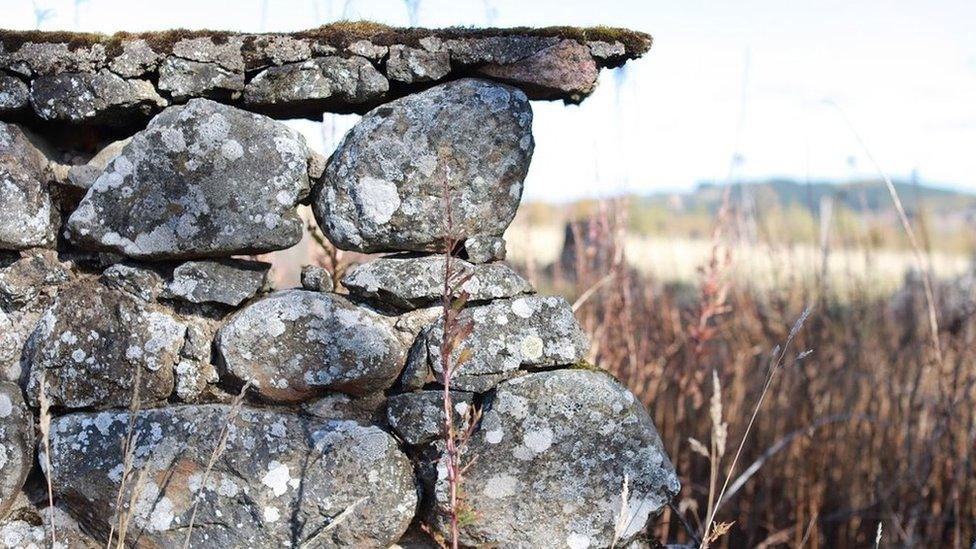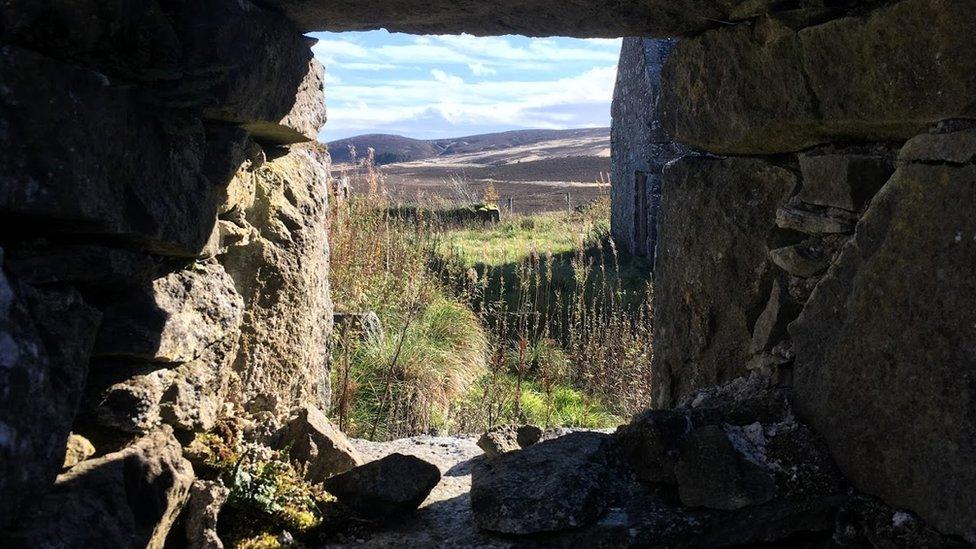Archaeological dig of early whisky distillery in the Cabrach
- Published

The ruins at Blackmiddens in the Cabrach
Archaeologists have begun excavating one of Scotland's earliest legal whisky distilleries.
Blackmiddens was one of the first small-scale whisky farms to be granted a licence to produce the drink following the Excise Act of 1823.
Its ruins are in the Cabrach, on the border between Moray and Aberdeenshire.
The dig aims to record the "character and extent" of the distillery and its relationship with an adjacent ruined farm steading.

The site is the focus of an archaeological dig
The Cabrach Trust is leading the dig with support from Forestry and Land Scotland and Historic Environment Scotland.
The trust was established to preserve the history of an area notorious for illegal whisky distillation and smuggling before the introduction of the Excise Act.
'White stallion'
Ancestors of local resident Joan Harvey were involved in smuggling illicit whisky to Aberdeen before the legal distillery was set up.
The 66-year-old, whose ancestors farmed at Blackmiddens, which lies between Rhynie and Dufftown, said: "I was always told that my great, great uncle was the head of the gang at the time. Stories about their adventures were passed down my family.
"Apparently my great, great grandfather had a white stallion and when the excisemen were billeted locally he would ride his white horse, alerting everyone that the excisemen were there so that the whisky smugglers could go to ground."

The small distillery was one of the first to be established after the introduction ot the Excise Act

The dig is being led by the Cabrach Trust
She added: "I was also told that, one time, the excisemen were trying to catch the smugglers and had set up barricades all around Aberdeen.
"My great, great uncle hired a horse-drawn hearse and loaded the coffin with whisky. When he reached the excisemen, they all took off their hats as a mark of respect for the dead, and the whisky went through."
Anna Brennand, chief executive of the Cabrach Trust, said the area was a place of "many secrets".
She added: "For decades local farmers secretly distilled whisky and smuggled it away under the noses of excisemen. Then, when the law was changed to make small-scale whisky production profitable, Blackmiddens was one of the first farms to take advantage of this."
Blackmiddens would have had a small 180 litre (40 gallon) still compared to whisky stills today which hold many thousands of litres.
Whisky production at the farm stopped just eight years after it began and the site fell into ruin.

A member of the dig team and a friend enjoying the sunshine during the exacavation

The ruins are in an area of north east Scotland called the Cabrach
Forestry and Land Scotland's national environment advisor Matt Ritchie said: "The hidden history of Blackmiddens is fascinating.
"Illicit whisky stills can be found throughout the Highlands but they were particularly common in the Cabrach.
"They are difficult to spot, but once you know what you are looking for, you can find them tucked away next to burns in the hills.
"When the Excise Act changed in 1823 and smaller distilleries became legal, the illicit distillers came down off the hills and set up in farmsteads like Blackmiddens."